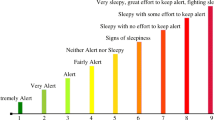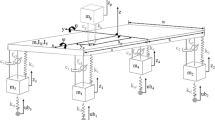Abstract
Most of the previous studies on the vibration ride comfort of the human-vehicle system were focused only on one or two aspects of the investigation. A hybrid approach which integrates all kinds of investigation methods in real environment and virtual environment is described. The real experimental environment includes the WBV(whole body vibration) test, questionnaires for human subjective sensation and motion capture. The virtual experimental environment includes the theoretical calculation on simplified 5-DOF human body vibration model, the vibration simulation and analysis within ADAMS/VibrationTM module, and the digital human biomechanics and occupational health analysis in Jack software. While the real experimental environment provides realistic and accurate test results, it also serves as core and validation for the virtual experimental environment. The virtual experimental environment takes full advantages of current available vibration simulation and digital human modelling software, and makes it possible to evaluate the sitting posture comfort in a human-vehicle system with various human anthropometric parameters. How this digital evaluation system for car seat comfort design is fitted in the Industry 4.0 framework is also proposed.
Similar content being viewed by others
References
RAJPUT B, ABBOUD R J. The inadequate effect of automobile seating on foot posture and callus development[J]. Ergonomics, 2007, 50(1): 131–137.
GYI D E. Driver discomfort: prevalence, prediction and prevention[D]. Loughborough: Loughborough University of Technology, 1996.
HANCOCK P A, PEPE A A, MURPHY L, et al. The power of positive and pleasurable ergonomics[J]. Ergonomics in Design, 2005, 13 (1): 8–14.
FENETY P A, PUTNAM C, WALKER J M. In-chair movement: validity, reliability and implications for measuring sitting discomfort[J]. Applied Ergonomics, 2000, 31(4): 383–393.
HANSON L, SPERLING L, AKSELSSON R. Preferred car driving posture using 3-D information[J]. International Journal of Vehicle Design, 2006, 42(1–2): 154–169.
ZHANG L, HELANDER M G, DRURY C G. Identifying factors of comfort and discomfort in sitting[J]. Human Factors: The Journal of the Human Factors and Ergonomics Society, 1996, 38(3): 377–389.
GRIFFIN M J. Handbook of human vibration[M]. London: Academic Press, 2012.
RAKHEJA S, DONG R G, PATRA S, et al. Biodynamics of the human body under whole-body vibration: synthesis of the reported data[J]. International Journal of Industrial Ergonomics 2010, 40, 710–732.
DU X, REN J, SANG C, et al. Simulation of the interaction between driver and seat[J]. Chinese Journal of Mechanical Engineering, 2013, 26(6): 1234–1242.
ROBERT M, CHARLES D N. A model for the response of seated humans to sinusoidal displacements of the seat[J]. Journal of Biomechanics, 1974, 7(3): 209–215.
QASSEM W, OTHMAN M O, ABDUL-MAJEED S. The effects of vertical and horizontal vibrations on the human body[J]. Medical Engineering and Physics, 1994, 16(2): 151–161.
MAGNUSSON M L, POPE M H, WILDER D G, et al. Are occupational drivers at an increased risk for developing musculoskeletal disorders?[J]. Spine International Journal, 1996, 21(6): 710–717.
BOILEAU P E, RAKHEJA S. Whole-body vertical bio-dynamic response characteristics of the seated vehicle driver measurement and model development[J]. International Journal of Industrial Ergonomics, 1998, 22(6): 449–472.
KIM T H, KIM Y T, YOON Y S. Development of a biomechanical model of the human body in a sitting posture with vibration transmissibility in the vertical direction[J]. International Journal of Industrial Ergonomics, 2005, 35(9): 817–829.
ZHANG E, XU Lin-an, LIU Zhonghua, et al. Dynamic modeling and vibration characteristics of multi-DOF upper part system of seated human body[J]. Journal of Engineering Design, 2008, 15(4): 244–249. (in Chinese)
REDDY P S, RAMAKRISHNA A, RAMJI K. Study of the dynamic behavior of a human driver coupled with a vehicle[J]. Proceedings of the Institution of Mechanical Engineers, Part D: Journal of Automobile Engineering, 2015, 229(2): 226–234.
LI W, ZHANG M, LV G, et al. Biomechanical response of the musculoskeletal system to whole body vibration using a seated driver model[J]. International Journal of Industrial Ergonomics, 2015, 45(2): 91–97.
RANTAHARJU T, MANSFIELD N J, ALA-HIIRO J M, et al. Predicting the health risks related to whole-body vibration and shock: a comparison of alternative assessment methods for highacceleration events in vehicles[J]. Ergonomics, 2015, 58(7): 1071–1087.
DU FENG. Frequency weighting filter design for automotive ride comfort evaluation[J]. Chinese Journal of Mechanical Engineering, 2016, 29(4): 727–738.
TAO Qing, KANG Jinsheng, ORPHANIDES S, et al. Application of JACK on evaluation of a split seat chair[C]//The 19th International Conference on Automation and Computing, Brunel University, London, UK, Sep. 14–15, 2013: 102–107.
ANDREONI G, SANTAMBROGIO G C, RABUFFETTI M, et al. Method for the analysis of posture and interface pressure of car drivers[J]. Applied Ergonomics, 2002, 33(6): 511–522.
HERMANN M, PENTEK T, OTTO B. Design principles for Industry 4.0 scenarios[C]//2016 49th Hawaii International Conference on System Sciences(HICSS), IEEE, Technische Universität Dortmund, Dortmund, Germany, January 2016: 3928–3937.
LEE J, BAGHERI B, KAO H A. A cyber-physical systems architecture for industry 4.0-based manufacturing systems[J]. Manufacturing Letters, 2015, 3: 18–23.
Author information
Authors and Affiliations
Corresponding author
Additional information
Supported by National Natural Science Foundation of China(Grant No. 51465056), and Xinjiang Provincial Natural Science Foundation of China (Grant No. 2015211C265), and Xinjiang University PhD Start-up Funds, China
TAO Qing, born in 1978, is currently an associate professor at Xinjiang University, China. He received his MSc degree from HuaZhong University of Science and Technology, China, in 2003, and received his PhD degree from Xinjiang University, China, in 2015. His research interests include mechanical design and industrial design.
KANG Jinsheng, born in 1952, is currently a senior lecturer at Brunel University London, UK. He received his PhD degree from Bournemouth University, UK in 2001. His research interests include human modelling and simulation, CAD, industrial design.
SUN Wenlei, born in 1962, is currently a professor at Xinjiang University, China. He received his PhD degree from Huazhong University of Science and Technology, China, in 2012. His research interests include mechanical design, CAD, advanced manufacturing.
LI Zhaobo, born in 1994, is currently an MSc candidate at School of Mechanic Engineering, Xinjiang University, China.
HUO Xiao, born in 1993, is currently an MSc candidate at School of Mechanic Engineering, Xinjiang University, China.
Rights and permissions
About this article
Cite this article
Tao, Q., Kang, J., Sun, W. et al. Digital evaluation of sitting posture comfort in human-vehicle system under industry 4.0 framework. Chin. J. Mech. Eng. 29, 1096–1103 (2016). https://doi.org/10.3901/CJME.2016.0718.082
Received:
Revised:
Accepted:
Published:
Issue Date:
DOI: https://doi.org/10.3901/CJME.2016.0718.082




